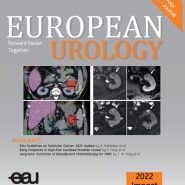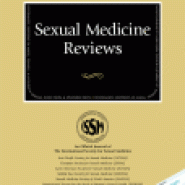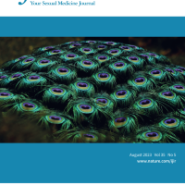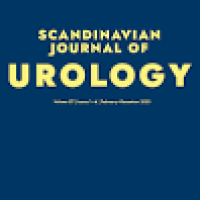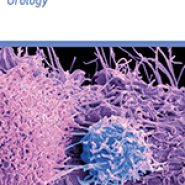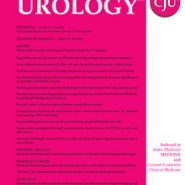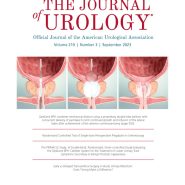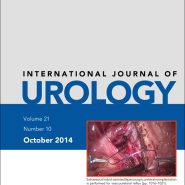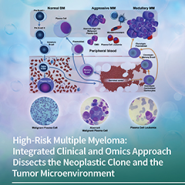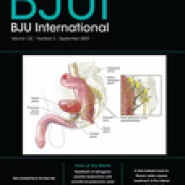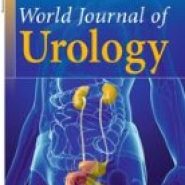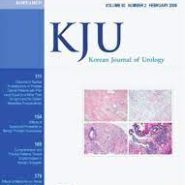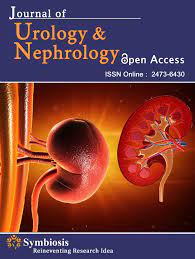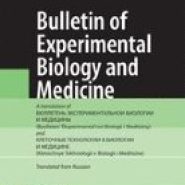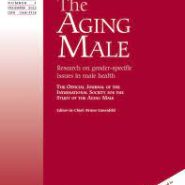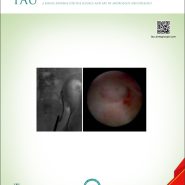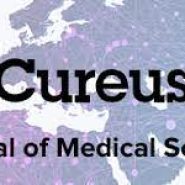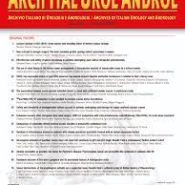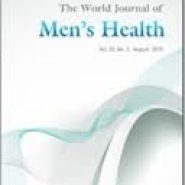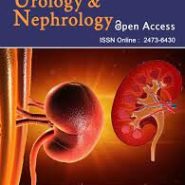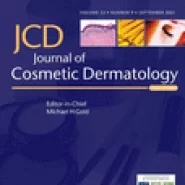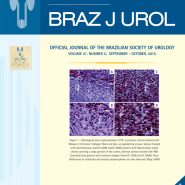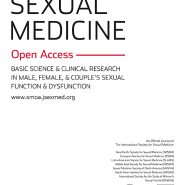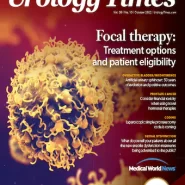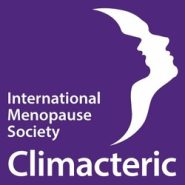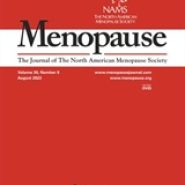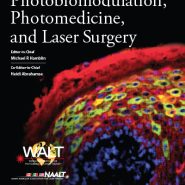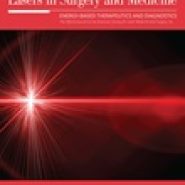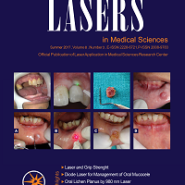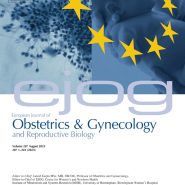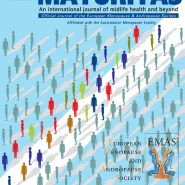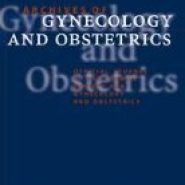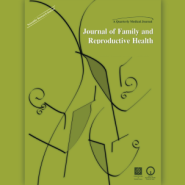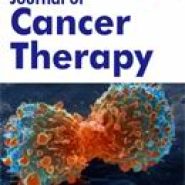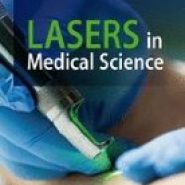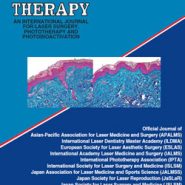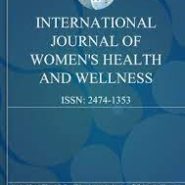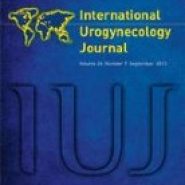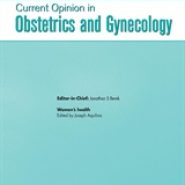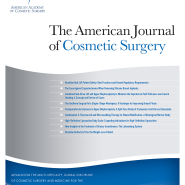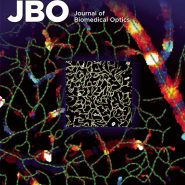Low-intensity Extracorporeal Shock Wave Treatment Improves Erectile Function: A Systematic Review and Meta-analysis
Low-Intensity Extracorporeal Shockwave Therapy for Erectile Dysfunction in Diabetic Patients
Efficacy of Low Intensity Shock-Wave Therapy for the treatment of ED in diabetic patients: a pooled analysis.
Clinical studies on Low Intensity Extracorporeal Shock-Wave Therapy for erectile dysfunction: a systematic review and meta-analysis of randomized controlled trials.
Can Low Intensity Extracorporeal Shock-Wave Therapy improve erectile dysfunction? A prospective, randomized, double-blind, placebo-controlled study
Low-Intensity Shockwave Therapy (LiST) for Erectile Dysfunction: Is It Safe for Patients on Anticoagulant Medication?
Meta-analysis of randomized controlled trials that assess the efficacy of low-intensity shockwave therapy for the treatment of erectile dysfunction
Low intensity extracorporeal shockwave therapy for erectile dysfunction: a study in an Indian population
Safety And Efficacy Of Low-intensity Extracorporeal Shockwave In The Treatment Of Vasculogenic Erectile Dysfunction: A Multi-center, Double-blind, Randomized Sham-controlled Clinical Trial.
Extracorporeal shockwave therapy in the treatment of erectile
dysfunction: A prospective, randomized, double-blinded, placebo controlled study.
Penile Low Intensity Shock Wave Treatment is Able to Shift PDE5i Nonresponders to Responders: A Double-Blind, Sham Controlled Study
Initial experience with linear focused shockwave treatment for
erectile dysfunction: a 6-month follow-up pilot study
Can Low-Intensity Extracorporeal Shockwave Therapy Improve
Erectile Function? A 6-Month Follow-up Pilot Study in Patients
with Organic Erectile Dysfunction
Efficient Promotion of Autophagy and Angiogenesis Using Mesenchymal Stem Cell Therapy Enhanced by the Low-Energy Shock Waves in the Treatment of Erec
tile Dysfunction
Our experience on the association of a new physical and medical therapy in patients suffering from induratio penis plastica
Determinants of Early Response to Low-Intensity Extracorporeal Shockwaves for the Treatment of Vasculogenic Erectile Dysfunction: An Open-Label, Prospective Study
Evaluation of clinical efficacy, safety and patient satisfaction rate after low-intensity extracorporeal shockwave therapy for the treatment of male erectile dysfunction: an Australian first open-label single-arm prospective clinical trial
Is there a role for extracorporeal shock wave therapy for erectile dysfunction unresponsive to phosphodiesterase type 5 inhibitors?
Penile Low-Intensity Shock Wave Therapy: A Promising Novel Modality for Erectile Dysfunction
Low-Intensity Shockwave Therapy for Erectile Dysfunction: A Randomized Clinical Trial Comparing 2 Treatment Protocols and the Impact of Repeating Treatment
Men’s power-pressure wave erectile regeneration-therapy: an early assessment
Efficiency Assessment of Shock Wave Therapy in Patients with Pelvic Pain Employing Harmonic
Analysis of Penile Bioimpedance.
Impact of aging and comorbidity on the efficacy of low-intensity
shock wave therapy for erectile dysfunction
Is there a role for extracorporeal shock wave therapy for erectile
dysfunction unresponsive to phosphodiesterase type 5 inhibitors?
In Situ Activation of Penile Progenitor Cells With Low-Intensity
Extracorporeal Shockwave Therapy
Does low intensity extracorporeal shock wave therapy have a physiological
effect on erectile function? Shortterm
results of a randomized, doubleblind,
sham controlled study.
Penile Low Intensity
Shock Wave Therapy: A Promising Novel Modality for Erectile
Dysfunction
Low-Intensity Shockwave for Treatment of
Vestibulodynia: A Randomized Controlled
Therapy Trial
Low intensity shockwave therapy in combination with phosphodiesterase-5 inhibitors is an effective and safe treatment option in patients with vasculogenic ED who are PDE5i non-responders: a multicenter single-arm clinical trial
Low Intensity Shock Wave Treatment for Erectile Dysfunction-How Long Does the Effect Last?
Low-Intensity Extracorporeal Shockwave Therapy Can Improve Erectile Function in Patients Who Failed to Respond to Phosphodiesterase Type 5 Inhibitors
Low-intensity extracorporeal shockwave therapy for erectile dysfunction: an overview
of systematic reviews
Low-Intensity Shockwave Therapy in the Treatment of Erectile Dysfunction
Low-Intensity Extracorporeal Shock Wave as a Novel Treatment for Erectile Dysfunction
Low-Intensity Extracorporeal Shock Wave Therapy—A Novel
Effective Treatment for Erectile Dysfunction in Severe ED Patients
Who Respond Poorly to PDE5 Inhibitor Therapy
Low-intensity shock wave therapy for erectile dysfunction and the influence of disease duration
Review of the Current Status of Low Intensity Extracorporeal
Shock-wave Therapy (Li-ESWT) in Erectile Dysfunction (ED)… Including Personal Experiences in 350 Patients
Low-Intensity Shock Wave Therapy and Its Application to Erectile
Dysfunction
Low-Intensity Extracorporeal Shock Wave Therapy in Vascular
Disease and Erectile Dysfunction: Theory and Outcomes
Men’s power-pressure wave erectile regeneration-therapy: an early assessment
Low-Intensity Shock Wave Therapy and Its Application to Erectile
Dysfunction
Low-intensity shockwave therapy for erectile dysfunction: the effect of energy flux density level and frequency of sessions per week
Safety and efficacy of low intensity shockwave (LISW)
treatment in patients with erectile dysfunction
Twelve-Month Efficacy and Safety of Low-Intensity Shockwave
Therapy for Erectile Dysfunction in Patients Who Do Not Respond to Phosphodiesterase Type 5 Inhibitors
Sexual function after vaginal erbium laser: the
results of a large, multicentric, prospective study
Fractional microablative CO2 laser in breast cancer survivors affected by iatrogenic vulvovaginal atrophy after failure of nonestrogenic local treatments: a retrospective study
Fractional CO2 Laser: From Skin Rejuvenation to Vulvo-Vaginal Reshaping
Long-term effects of vaginal erbium laser in the treatment of genitourinary syndrome of menopause
Novel minimally invasive laser treatment of urinary incontinence in women
Effect of the Fractional CO2 Laser on the Quality of Life, General Health, and Genitourinary Symptoms in Postmenopausal Women With Vaginal Atrophy: A Prospective Cohort
Safety and long-term efficacy of fractional CO2 laser treatment in women suffering from genitourinary syndrome of menopause
Fractional CO2 laser therapy: a new challenge for vulvovaginal atrophy in postmenopausal women
Fractional microablative CO2 laser in breast cancer survivors affected by iatrogenic vulvovaginal atrophy after failure of nonestrogenic local treatments: a retrospective study
Sexual function after fractional microablative CO₂ laser in women with vulvovaginal atrophy
First assessment of short-term efficacy of Er:YAG laser treatment on stress urinary incontinence in women: prospective cohort study
Fractional CO2 Laser Treatment of the Vestibule for Patients with Vestibulodynia and Genitourinary Syndrome of Menopause: A Pilot Study
Vaginal erbium laser: the second-generation thermotherapy for the genitourinary syndrome of menopause
Fractional CO2 laser for treatment of stress urinary incontinence
CO2 laser and the genitourinary syndrome of menopause: a randomized sham-controlled trial
Microablative fractional CO2-laser therapy and the genitourinary syndrome of menopause: An observational study
Fractional CO2 laser for vulvovaginal atrophy (VVA) dyspareunia relief in breast cancer survivors
Efficacy of Erbium:YAG laser treatment compared to topical estriol treatment for symptoms of genitourinary syndrome of menopause
Vulvo-vaginal atrophy: a new treatment modality using thermo-ablative fractional CO2 laser
Fractional CO2 Laser for Treatment of Vulvovaginal Atrophy: A Short Time Follow-up
Randomized, double-blind, placebo-controlled clinical trial for evaluating the efficacy of fractional CO2 laser compared with topical estriol in the treatment of vaginal atrophy in postmenopausal women
Vaginal erbium laser as second-generation thermotherapy for the genitourinary syndrome of menopause: a pilot study in breast cancer survivors
Treatment of female stress urinary incontinence with Erbium-YAG laser in non-ablative mode
Treatment to External Labia and Vaginal Canal With CO2 Laser for Symptoms of Vulvovaginal Atrophy in Postmenopausal Women
Evaluation of the CO2 Laser Therapy on Vulvo-Vaginal Atrophy (VVA) in Oncological Patients: Preliminary Results
Minimally invasive, non-ablative Er:YAG laser treatment of stress urinary incontinence in women–a pilot study
An assessment of the safety and efficacy of a fractional CO2 laser system for the treatment of vulvovaginal atrophy
Use of a novel fractional CO2 laser for the treatment of genitourinary syndrome of menopause: 1-year outcomes
Treatment of Vaginal Relaxation Syndrome with an Erbium:YAG Laser Using 90° and 360° Scanning Scopes: A Pilot Study & Short-term Results
Early effect of fractional CO2 laser treatment in Post-menopausal women with vaginal atrophy
Fractional microablative CO2 laser for vulvovaginal atrophy in women treated with chemotherapy and/or hormonal therapy for breast cancer: a retrospective study
Journal of Lasers in Medical Sciences
The Effect of the CO2 Fractional Laser or Premarin Vaginal Cream on Improving Sexual Function in Menopausal Women: A Randomized Controlled Trial
Non-ablative erbium YAG laser for the treatment of type III stress urinary incontinence (intrinsic sphincter deficiency)
Fractional CO2 laser treatment for vulvovaginal atrophy symptoms and vaginal rejuvenation in perimenopausal women
Long-Term Safety and Efficacy of Fractional CO2 Laser Treatment in Post-Menopausal Women with Vaginal Atrophy
Ablative dual-phase Erbium:YAG laser treatment of atrophy-related vaginal symptoms in post-menopausal breast cancer survivors omitting hormonal treatment
Long-term reliability of fractioned CO2 laser as a treatment for vulvovaginal atrophy (VVA) symptoms
A randomized clinical trial comparing vaginal laser therapy to vaginal estrogen therapy in women with genitourinary syndrome of menopause: The VeLVET Trial
Laser treatment for the management of genitourinary syndrome of menopause after breast cancer. Hope or hype?
The use of pulsed CO2 lasers for the treatment of vulvovaginal atrophy
Impact of microablative fractional radiofrequency on the vaginal health, microbiota, and cellularity of postmenopausal women
The effect of microablative fractional CO2 laser on vaginal flora of postmenopausal women
Histological study on the effects of microablative fractional CO2 laser on atrophic vaginal tissue: an ex vivo study
Early Regenerative Modifications of Human Postmenopausal Atrophic Vaginal Mucosa Following Fractional CO2 Laser Treatment
Microscopic and ultrastructural modifications of postmenopausal atrophic vaginal mucosa after fractional carbon dioxide laser treatment
Fractional CO2 laser for genitourinary syndrome of menopause in breast cancer survivors: clinical, immunological, and microbiological aspects
Vaginal Fractional CO2 Laser: A Minimally Invasive Option for Vaginal Rejuvenation
Microscopic and ultrastructural modifications of postmenopausal atrophic vaginal mucosa after fractional carbon dioxide laser treatment
Optical clearing of vaginal tissues, ex vivo, for minimally invasive laser treatment of female stress urinary incontinence
Microablative fractional CO2 laser for the genitourinary syndrome of menopause: power of 30 or 40 W?
Rationale and design for the Vaginal Erbium Laser Academy Study (VELAS): an international multicenter observational study on genitourinary syndrome of menopause and stress urinary incontinence
Vulvar and vaginal fractional CO2 laser treatments for genitourinary syndrome of menopause
Pilot study of fractional CO2 laser therapy for genitourinary syndrome of menopause in gynecologic cancer survivors

